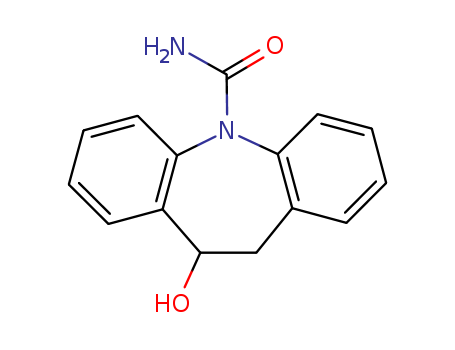- Chemical Name:Licarbazepine
- CAS No.:29331-92-8
- Molecular Formula:C15H14 N2 O2
- Molecular Weight:254.288
- Hs Code.:2933990090
- European Community (EC) Number:608-350-1
- UNII:XFX1A5KJ3V
- DSSTox Substance ID:DTXSID50865484
- Nikkaji Number:J394.865J
- Wikipedia:Licarbazepine
- Wikidata:Q6542996
- NCI Thesaurus Code:C81475
- Metabolomics Workbench ID:68105
- ChEMBL ID:CHEMBL1067
- Mol file:29331-92-8.mol
Synonyms:10,11-dihydro-10-hydroxy-5H-dibenz(b,f)azepine-5-carboxamide;10,11-MHD;Licarbazepine




